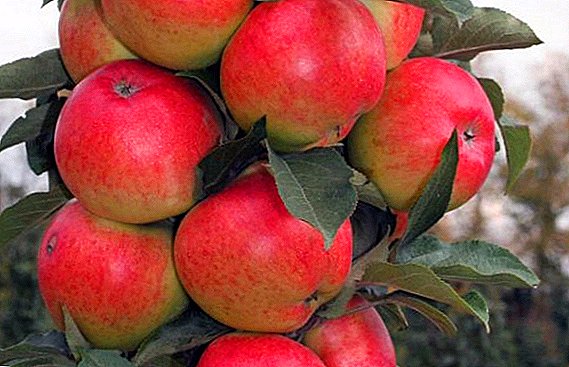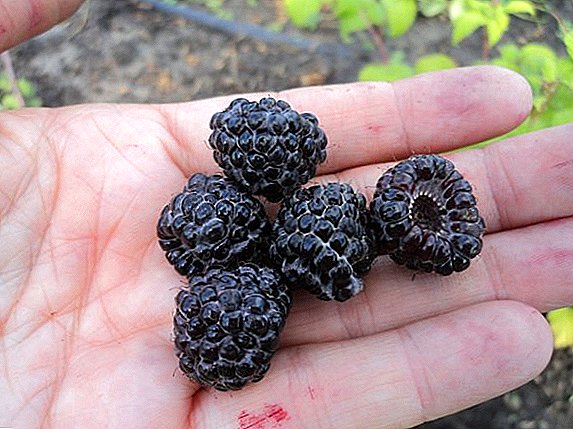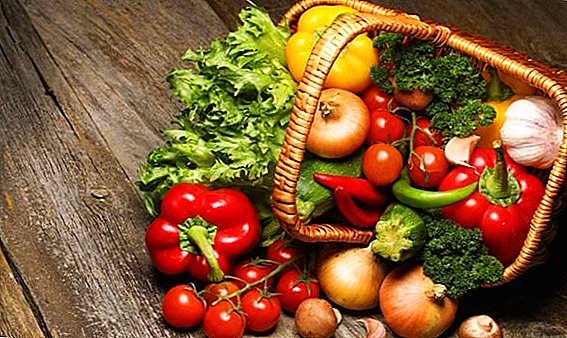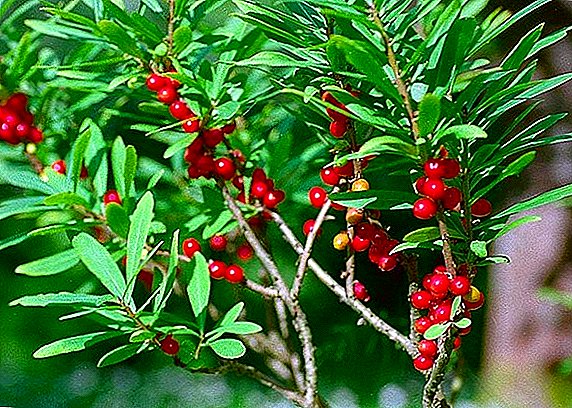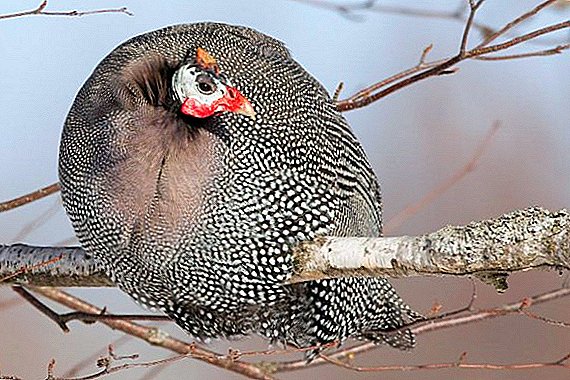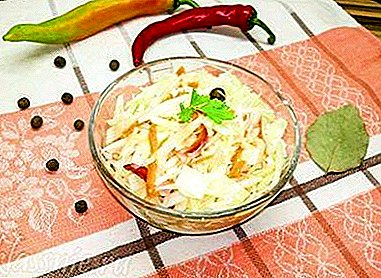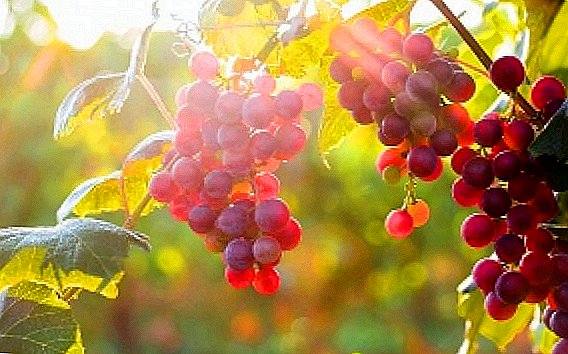
In the autumn the vine needs particularly careful care.
It has already given all its strength to the ripening of the crop, and the main task of the grower is to properly prepare the crop for winter rest.
Surely, you have heard more than once that in one area the grapes became extinct, and in the neighboring one it was a good winter.
Why does it depend, really, only on the variety? No, not only. How fruitful work will be done in the vineyard in the autumn, so the efforts of the grower will be rewarded.
But what to do with the collected rich harvest is probably not worth recommending.
So the highlights of leaving in the fall season are feeding, watering, pruning, treatment of diseases and parasitic insects, as well as shelter winter grape bushes. These activities need to be carried out annually and with skill. We will talk about this in this article.
First about watering

Like any fruit crops, grapes need more watering during the ripening season. However, with this, too, you can not overdo it.
Due to an excess of moisture in the period of a large amount of precipitation, the berries on the vine burst, which reduces their taste and attractive appearance. In addition, these berries are not stored for a long time, they should be immediately processed and make juice or leave to ferment to get wine or vinegar.
After harvesting the grapes is not recommended to be watered often, but, nevertheless, the ground should be well saturated with moisture, for the complete saturation of the root system and the best preparation of the bush for the winter.
Do not forget that on sandy soils the bushes should be watered more often, but with a smaller volume of liquid, and on heavy clayey ones, on the contrary, watering is less frequent, but more abundant.
The timing and frequency of irrigation is determined by the climate in the region of growing vineyards, which determines the temperature and humidity of the air, the intensity of the winds, the depth of the groundwater and the timing of the onset of frost.
However, wherever the vineyard is planted, in the middle of autumn it is necessary to soak up the soil abundantly with moisture. Sometimes for this purpose equip narrow groovesso that the water penetrates under the roots of the bush, and does not overflow.
After watering is desirable loosen the ground around the bush for the best penetration of air and preservation of moisture in it for a longer period. Such events contribute to the better stability of the grapes frost.
Secondly, grape fertilizer

After harvesting, the vine becomes completely weakened, and therefore requires intensive feeding to maintain strength during the winter and to lay a new potential for the next fruiting.
It is from the autumn feeding will depend on the state of the grapes after frost and how much harvest you will gather from the bush for the next season. To provide all the necessary substances, the vineyard is fertilized with organic matter - compost or rotten manure.
It is not necessary to do a digging soil for feeding. You can restrict mulching around the base of the grapes.
For best results, wood ash is added to the fertilizer. To increase the calcium content in the ground at the site, it is necessary to pour about 150 g of lime and disperse the soil to a depth of 20-25 cm under each bush of grapes.
Fertilizer adult grapes should be carried out once every three to four years. If the bush is only planted, and fertilizing has been applied to it, in the next four years fertilizing is not recommended.
What is the timeline and how to feed the vineyard? Knowledgeable winegrowers once every three years, in the end of autumn, fertilizing is carried out with fertilizers containing potassium and phosphorus. Usually it is a mixture consisting of 25 g of superphosphate and 25 g of potassium sulfate per 1 sq. M.
Also, the soil covers an area of 1 sq.m. around the grape bush, pour a mixture of fertilizers consisting of 20 g of superphosphate water extract and 10 g of potash diluted in water.
With this watering, the soil should be soaked for at least 20-25cm deep. You can use these fertilizers in dry form along with digging the ground. If the soil is highly depleted and needs additional elements, then it is necessary to add about 2.5 g of boric acid, 2 g of zinc sulphate, 5 g of ammonium molybdate or 1 g of potassium iodine and up to 2.5 g of manganese sulphate in this mixture.
Such careful feeding will be the key to a successful wintering of the vines. At the beginning of autumn it is necessary to conduct foliar dressing, this will contribute to the early maturation of the vine.
Pruning our bush in autumn

Well, here's the turn to pruning. Why expose the bush to this manipulation?
- After the procedure, the bush is rejuvenated, and the yield is much richer and larger than the uncircled grapes;
- the crop ripens much faster, because the shoots are young and sap flow is better in them;
- more resistant frost protection;
- the bush is easier to care for and protect from frost, disease and pests;
- preventing the spread of diseases and insect pests further along the vineyard by trimming diseased and infected shoots.
To begin this procedure is possible only after the grapes go to sleep, that is, a few weeks after all the foliage falls from the bush. Up to this point in the vine is still quite active process of photosynthesis.
Too early pruning will lead to the fact that there are not enough nutrients in the grape bush for safe wintering and further fruiting. However, some growers consider the start of pruning - mid-September. This mainly depends on the climate of the region and the proximity of frost.
If you too tighten and start pruning after the first frosts, then when manipulating the vine it may break off in an unnecessary place, because the bark becomes too fragile due to the cold.
During pruning, first of all, removed diseased and dried brancheswhich must be collected in one place and burned to prevent the spread of disease spores and pest larvae further along the vineyard.
Then extra shoots are removed to create the correct shape of the bush. It should not be forgotten that the vine must be left apart from the healthy main branches and shoots that perform a spare function for the formation of grapes.
There are several criteria for pruning, which should be followed if you are afraid of harming your vineyard with unnecessary manipulations.
- The lower two buds on the vine should not be taken into account, they are not yet sufficiently developed;
- In early September you want to cut all the young side branches on the old branches. It is those who reached the wire, located 60 cm from the soil level;
- Green twigs that reached the wire, located 30 cm from the ground, cut only the apex, namely to 15% of the total length of the shoot. We cut the side shoots, leaving no more than two leaves on them;
- In the middle of autumn, October, a fruit link is formed, consisting of a fruit arrow and a substitute bitch. For its correct bookmark, we take several strong shoots that reached the second wire. We cut off the bottom, leaving only 3 peepholes - this will be the knot of substitution. The shoot, which is on top, is cut so that about 6 buds remain on it - this will be the fruit arrow;
- in mid-September all shoots that have reached 20 cm are cut;
- Shoots that have grown more than 30 cm in length, pruned by 10%;
- in one-year-old twigs, all the excess shoots are cut off, only those that are located at an angle of 90 degrees remain. For a healthy and strong bush it is necessary to have up to seven pieces of such sleeves;
- After that, the dried top is cut off.
All places of cuts and manipulations on the grape bush are necessary cover with garden pitch, in order to avoid rotting processes.
Do not over-actively remove shoots. You should always remember about the reserve, which may well be needed in the spring, after an accurate determination of frost damage. For the correct formation of the bush, it is desirable to leave 1/3 more branches.
In the spring form of the vineyard is finally adjusted.
Fight against diseases and pests

If the grapes are not treated for diseases and insects in the fall, then he will go to wintering with this “luggage”. Therefore, you should take care of the health of the bush.
The most affordable leaf treatment option is spraying with soda-saline solution.
Recipe simple - for 1 standard bucket of water 10 tablespoons of salt + 5 tablespoons of food soda.
The resulting warm solution from the sprayer process the entire bush, starting from the ground at the base and ending with the top of the vine. It is important not to miss a single piece of paper. This procedure is carried out at least three or four times in the 15-20 of October.
In all the old benefits of viticulture referred processing bushes a solution of DNOC or drug "Nitrofen". On sale you will not find them, because now they are prohibited for use by law.
As a treatment of the vines from infection with spores of fungi and mold, at present, winegrowers use spraying with solutions of iron and copper sulfate. But first, the bush must be prepared.
Initially, the autumn sanitary pruning of grapes is carried out. After, the whole vine is put on the ground and pinned.
In advance prepared solution of ferrous sulfate, in the ratio of 400 g of powder per 10 l of water or with a solution of copper vitriol (100 g per 10 l of water) spray the entire bush.
It should be noted that the copper sulfate solution must be warmapproximately plus 40-50 degrees.
Only after complete drying of the solution on the surface of the bush will it be possible to proceed to its insulation for the winter.
Very often in the vineyards you can see leaves with white stains. This is because the vine was treated with a solution of hydrated lime. This type of protection is quite common due to its effectiveness in controlling pests and mold in the winter, even during thaws.
Cooking Board - Dilute 1 kg of quicklime in 3 liters of water and only when the quenching process is over, the resulting volume of liquid is adjusted to 10 liters. The obtained whitewash processed all the grape leaves. This can be done with the help of not only a sprayer, but also a brush, a whisk, a brush.
To avoid re-infection by pests of the vine bushes, the soil between the rows must be deeply dug. As a result, the wintering of the larvae and caterpillars of insects is destroyed, and the risk of the spread of infection is reduced.
We harbor grapes from frost

If you want the vineyard to suffer as little as possible from frost, it should be well insulated. Methods for this are different - from simple wrapping with a wrap, to dropping a bush into the ground along the entire length.
There are some grape varieties that do not require additional measures to protect against frost, but this mainly depends on the climate of the vine growing region. Severe frosts can destroy the vineyard.
The most successful variant of warming is shelter pine and spruce branches or as they are called, lapnik. Through such protection air well circulates, because of what processes of putrefaction and development of diseases do not arise. In addition, the branches perfectly retain the snow cover, which creates an ideal environment for wintering bush.
The time for warming the bush for the winter comes immediately after feeding and cutting the vine in late October - early November. If it is too late to start shelter, then the vine can be damaged - because of the cold, the bark becomes quite fragile.
Work on the tab forms of grapes is carried out taking into account that in the winter the vine can be easily tilt and sprinkle with earth without risk of damage. Sometimes the bush is covered, not bending down to the ground, then it can be pruned arbitrarily.
Packing with polyethylene is not only ineffective, but it can even be dangerous to the vine. Since due to the large temperature drops in winter, moisture is collected inside the bag, which is an excellent medium for the growth of mold, spores of fungi and other diseases. This kind of shelter does more harm than good.
I want to believe that with the help of our article your vineyard will be healthy and rich in yields. As you can see, very little wisdom. The main thing is to treat your work with soul and to observe certain principles and terms of autumn care.


